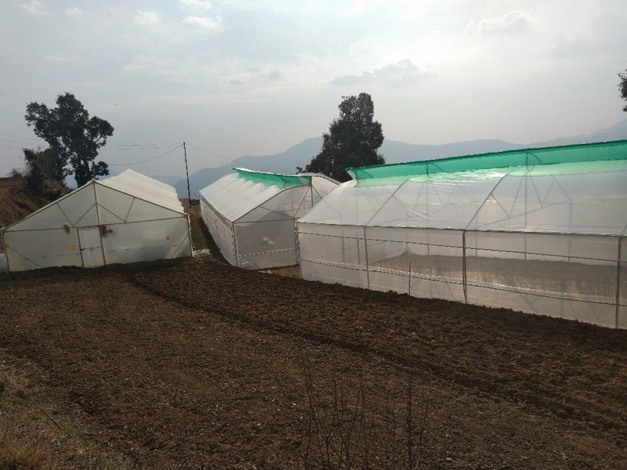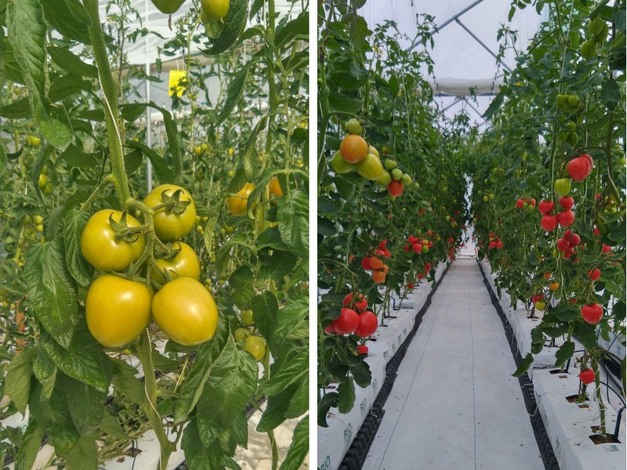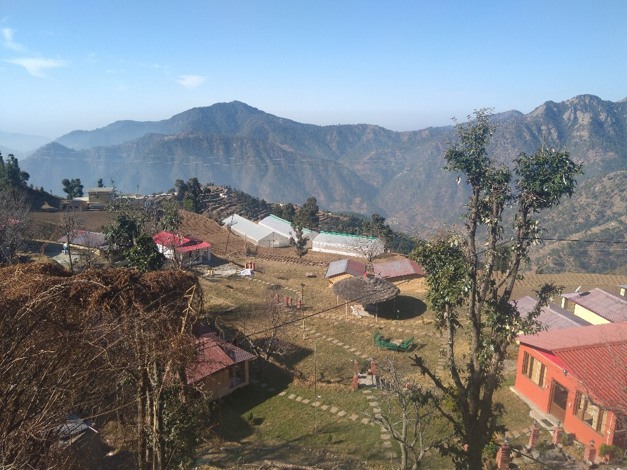Tehri Hydroponics Farm, nestled amidst the scenic hills of Uttarakhand, India, has a five-and-a-half-year track record and spans an acreage of 86,000 square feet. Prabhat Ramoloa, the grower and owner behind Tehri Hydroponics Farm, shed light on the company's journey, challenges faced, and the future of hydroponics farming in India.

"Uttarakhand's temperature, with frost in winters and heavy rainfall, posed significant barriers to year-round cultivation. This compelled us to venture into the greenhouse industry, utilizing protective cultivation techniques to overcome these challenges and ensure continuous crop growth," explains Prabhat. "In this location, transportation of raw materials is challenging, and due to the high humidity in rainy seasons, we have to fight blight and fungus issues, but on the other hand, we are not bothered by high temperature and heavy insect attacks."
Prabhat is surrounded by cucumber, lettuce, and tomato plants as he tells the story of Tehry Hydroponics Farm. The company grows a diverse range of crops that includes French beans, strawberries, apples, kiwis, peaches, apricots, cauliflower, broccoli, and red cabbage. To optimize their operations, he emphasizes the importance of employing various techniques. "Protective cultivation, low tunnels, hydroponics cultivation, drip irrigation, mulch systems, precise irrigation, and soil testing for accurate fertilization are all integral to our approach. These methods enhance our crop yields and contribute to overall efficiency and sustainability."
 Growing on Biogrow substrates
Growing on Biogrow substrates

He explains how India's progress in the field of hydroponics farming has been rapid, driven by concerns surrounding global warming and water scarcity. "Professionals from diverse fields, including the corporate and engineering sectors, are increasingly venturing into farming businesses. Traditional farmers are also embracing controlled environment agriculture (CEA) and hydroponics as viable alternatives." Also, Prabhat himself used to work as an electronic engineer but returned to his village during the pandemic. After seeing local growers struggle, he set up a hydroponic farm and nowadays trains other farmers with similar goals.
As Prabhat believes the industry holds significant opportunities, it faces challenges due to the scarcity of agricultural land. "India's rapidly increasing population and decreasing agricultural land create a pressing need for alternative cultivation methods. Hydroponics, enabling growers to use less land for more cultivation, is rapidly gaining the attention of corporates like Adani and Zomato. But the high demand for food in the food service industry is holding the industry back, and the adoption of hydroponics farming is hindered by the scarcity of land and the requirement to make it more accessible and cost-effective."

CEA, precise irrigation, and hydroponics might not be native to India. However, Prabhat highlights the country's adaptability, stating, "India has swiftly embraced these technologies while also customizing them to suit our specific requirements and align them with the unique dynamics of the Indian agricultural market. As the Indian agricultural market has lower rates of crops compared to foreign countries, our growers and technical professionals aim to make these techniques more cost-effective and affordable."
For more information:
Prabhat Ramola
Tehri Hydroponics Farm
prabhat.ramola45@gmail.com
www.facebook.com/tehrihydroponicsfarm
